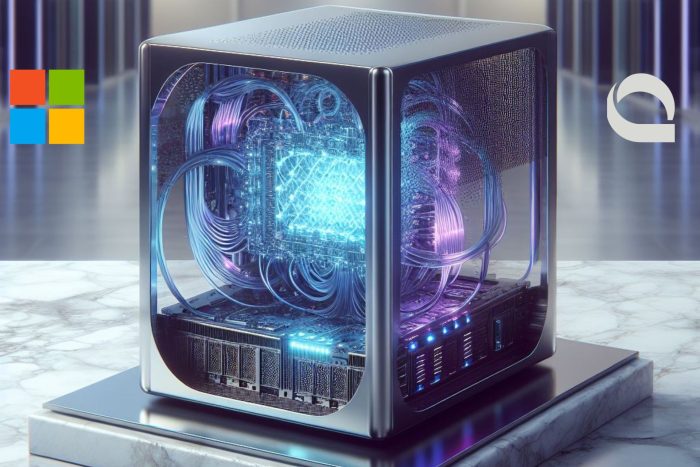Microsoft and Quantinumm reach Level 2 Quantum computing with 800x improvement
The two companies achieved 14,000 experiments without failures
3 min. read
Published on
Read our disclosure page to find out how can you help Windows Report sustain the editorial team Read more

Microsoft and Quantinumm collaborate to enhance the reliability of quantum computers. As you might already know, Microsoft invests heavily in quantum technology. However, it is not as popular as AI. Yet, it is possible to simulate quantum computers with the help of AI.
Quantum mechanics allow machines to use this technology to achieve impressive computational speeds. However, the fundamental unit of quantum computers is the qubit. Unfortunately, they are sensitive and prone to errors. After all, even minor disturbances can cause them. So, Microsoft and Quantinumm made error-resilient systems using error correction techniques.
How did Microsoft and Quantinumm build the quantum systems?
The two companies combined Microsoft’s qubit virtualization system with Quantinumm’s ion-trap hardware to build the error-resilient systems. Thus, they achieved a new quantum milestone. According to Microsoft, they ran 14,000 individual experiments without failures.
By achieving this milestone, Microsoft and Quantinumm made it possible to move to Level 2 of Quantum computing. Additionally, with the qubit-virtualization system, they created highly reliable logical qubits from 30 physical qubits. Thus, they achieved an 800x improvement in error rate.
Microsoft and Quantinumm met the three fundamental criteria required for reliable quantum computing. So, they separated logical and physical error rates, corrected all the individual circuit errors, and generated entanglements between two logical qubits. However, this is just a prerequisite to building a hybrid supercomputer.
Fortunately, another feat managed by the two companies was to create a successful syndrome extraction technique required to identify and fix quantum computation errors without destroying the qubits. Also, Microsoft and Quantinumm can reach longer and more complex computations without failure by using syndrome extractions.
The future of hybrid supercomputers looks promising
The next goal of Microsoft and Quantinumm is to create a hybrid supercomputer with 100 reliable logical qubits for scientific usage. Afterward, the companies want to scale close to 1000 reliable logical qubits for commercial use. In the meantime, Microsoft plans to include the advanced capabilities in a private preview of Azure Quantum Elements for their customers.
Ultimately, the discovery made by Microsoft and Quantinumm will help them achieve new heights in the quantum industry. Thus, in a few years, we might see some hybrid supercomputers capable of computing years of data in a few days. Furthermore, achieving an 800x improvement in error rate shows that the advancement could take less than anticipated.
What are your thoughts? Are you eager to find out more about quantum supercomputers? Let us know in the comments.








